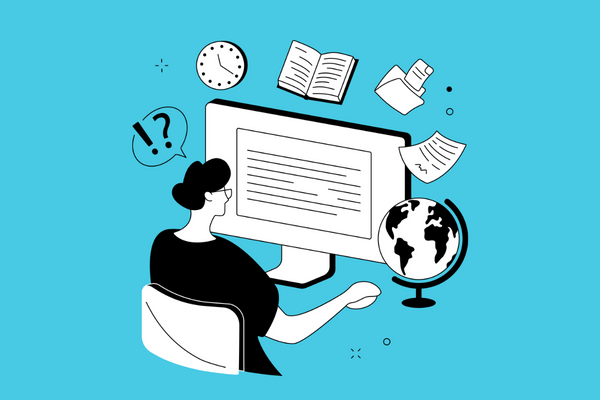10 Essential Mental Models for students

Intro
Table of Contents
"Mental Models" is a book by Peter Hollins that introduces readers to the concept of mental models and provides a comprehensive guide to understanding and applying them in various areas of life. Mental models are cognitive frameworks that help individuals organize and make sense of complex information, make decisions, and solve problems. They are essentially mental shortcuts that individuals use to simplify and process information.
In this book, Hollins has explored 30 mental models and explains how these mental models can help people make better decisions, solve problems more effectively, and become more productive and efficient.
The Author makes the book accessible to readers of all backgrounds and interests by providing real-world examples and practical tips. this book provides a valuable resource for understanding and applying mental models in your everyday life regardless of Whether you are a student, a business professional, or simply someone looking to improve your decision-making and problem-solving skills.
Let us look at some of the models explained in the book and how can students benefit from them:
1. Make Reversible Decisions
This mental model suggests that when possible, we should try to make decisions that can be reversed or changed later if necessary, rather than decisions that are permanent or difficult to undo. This allows us to be more flexible and adapt to changing circumstances.
How Can it help a student: Students can benefit from this mental model by recognizing that many decisions can be reversed or changed later, which can reduce the fear and anxiety of making a decision. This can help students be more decisive and take more risks, as they know they can always adjust their course later if necessary.
2. Minimize Regret
This mental model encourages us to make decisions we are unlikely to regret later on. This involves considering the potential outcomes of different options and choosing the one that is most likely to lead to a positive outcome.
How Can it help a student: This mental model can help students avoid making decisions they may regret later, by encouraging them to consider the potential outcomes and consequences of different choices. This can help students make more informed decisions and reduce the likelihood of experiencing regret or disappointment.
3. Wait for the Regression to the Mean
This mental model suggests that when we experience extreme or unusual events, we should be aware that these are often followed by a return to more typical or average outcomes. This can help us avoid overreacting to outliers and making decisions based on unreliable data.
How Can it help a student: By recognizing that extreme outcomes are often followed by more average or typical outcomes, students can avoid overreacting to short-term fluctuations in their academic performance or other areas of their life. This can help students maintain a more even keel and avoid getting overly discouraged or complacent.
4. Think With System 2
This mental model involves using our "System 2" thinking processes, which are deliberate, conscious, and analytical, rather than our more intuitive and automatic "System 1" processes. By engaging in more deliberate and reflective thinking, we can make better decisions and avoid common cognitive biases.
How Can it help a student: This mental model can help students approach complex or challenging problems with a more deliberate and analytical mindset, rather than relying on quick, intuitive thinking. This can help students develop their critical thinking skills and make more thoughtful and effective decisions.
5. Separate Correlation From Causation
This mental model involves recognizing that just because two things are related or occur together, it does not necessarily mean that one caused the other. By carefully examining the evidence, we can avoid making false assumptions about causation.
How Can it help a student: By recognizing that correlation does not necessarily imply causation, students can avoid making assumptions or drawing conclusions that are not supported by the evidence. This can help students develop more accurate and nuanced thinking, and avoid falling prey to logical fallacies or cognitive biases.
6. Get Back to First Principles
This mental model involves breaking down complex problems into their fundamental components or principles, in order to gain a deeper understanding of the underlying issues. We can make more informed and effective decisions by focusing on the first principles.
How Can it help a student: This mental model can help students break down complex problems or concepts into their fundamental components, which can make them easier to understand and analyze. This can help students develop a deeper and more nuanced understanding of complex topics, which can be especially useful in subjects like science, mathematics, and philosophy.
7. Avoid Your Non-Genius Zones
This mental model suggests that we should be aware of our own strengths and weaknesses, and try to avoid situations where we are likely to perform poorly. We can better use our talents and resources by focusing on our areas of expertise.
How Can it help a student: By recognizing their own strengths and weaknesses, students can save time and energy in areas where they are unlikely to excel. This can help students focus on their strengths and develop expertise in areas where they are most likely to succeed.
8. Murphy’s Law
This mental model suggests that anything that can go wrong will go wrong. By recognizing that unexpected problems and setbacks are a normal part of life, we can be better prepared to deal with them when they occur.
How Can it help a student: This mental model can help students anticipate and prepare for potential problems or challenges, which can reduce the likelihood of negative outcomes. This can help students develop a more proactive and resilient mindset, which can be especially useful in high-stress or high-pressure situations.
9. The Pareto Principle
This mental model works on the 20/80 principle. It suggests that a small number of inputs or factors are often responsible for most outputs or results. By focusing on the most critical factors, we can achieve more with less effort.
How Can it help a student: By recognizing that a small percentage of actions or inputs often account for a large percentage of outcomes or results, students can focus on the most important and impactful actions or behaviors. This can help students prioritize their time and energy, and maximize their effectiveness and productivity.
10. Parkinson’s Laws
This mental model suggests that work tends to expand to fill the time available for its completion and that bureaucracy and other forms of inefficiency tend to grow over time. By being aware of these tendencies, we can take steps to avoid them and increase our productivity.
How can it help a student: This mental model can help students recognize the importance of setting deadlines and constraints, which can increase their focus and motivation. This can help students avoid procrastination and develop better time management skills, which can be especially useful in academic settings where deadlines and time pressures are common.



